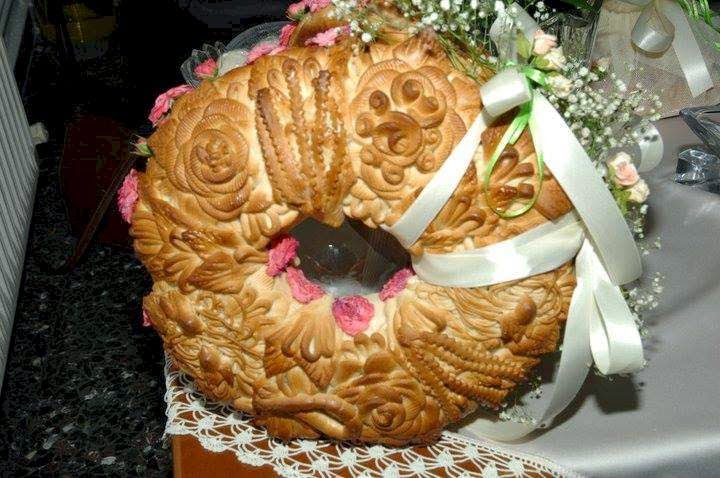Decades ago in the mountain villages of Crete, it was traditional for the prospective bride and groom to arrive for their wedding ceremony on splendid, white horses. The bride’s dowry was carried by donkeys striding behind the horses. The groom was in splendid Cretan dress with white shirt and high boots, and the bride, sitting side saddle on her horse, usually wore a flowing gown of white chiffon.
Weddings such as these are not performed these days, but a “mock” Traditional Cretan Wedding takes place every July in Arolithos, a mountain village eleven km from Heraklion. Hundreds of tourists come to see a truly unique reenactment, complete with music, dancing, and the very best Cretan food.
In years gone by, a man known as the kalestís (the person who invites the guests), would go door to door in the village and extend personal invitations to every family. Village elders took charge of all preparations, following the customs explained in George Evangelou Apostolakis’ award-winning book, Traditional Cretan Wedding. Mr. Apostolakis received a special commendation from the Academy of Athens for his work. The academy said it “contributes to the enrichment of the archives of Crete and to the preservation of the facts concerning the folk culture of the country.”
For the wedding of years past, intricate planning was involved to serve thousands of guests. The women focused on two tasks: kneading bread for the wedding rolls and preparing linens for the dowry; the men were responsible for the meat and wine. The women who created the design on the bread were called Xóbliastres and the intricate decorations on the bread were known as xóblia.
The men were responsible for the cellar, where all the food was stored and the meat hung from wooden planks. There were barrels filled with wine and rakí made in the village, and an earthenware jar for olive oil. A “cellar master” ensured that all ran smoothly.
All traditions are not observed for the “mock” ceremony, but they are explained to the tourists. The excitement reaches its peak when the wedding party arrives followed by musicians on foot playing the laoutó and the Cretan lýra (a three-stringed instrument made of wood and played with a bow). The proud people of Arolithos say this is as close to an old-fashioned, Traditional Cretan Wedding as anyone will experience.
The traditional village of Arolithos is a magical place to plan your own wedding, and you can find out more through their website - www.arolithos.com
TELOS
This article was published in The National Herald, April 2014
Photos courtesy of Arolithos Traditional Cretan Village






